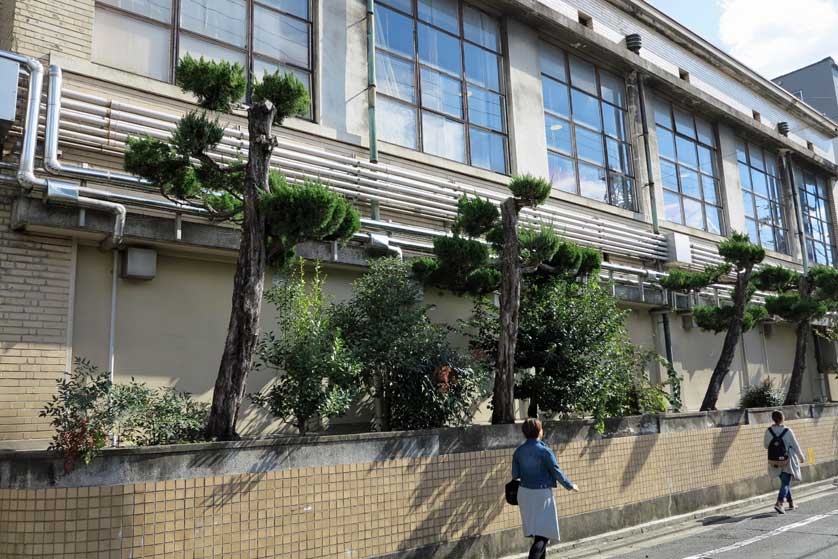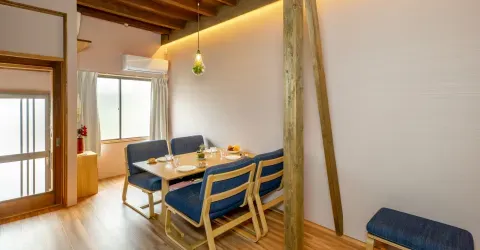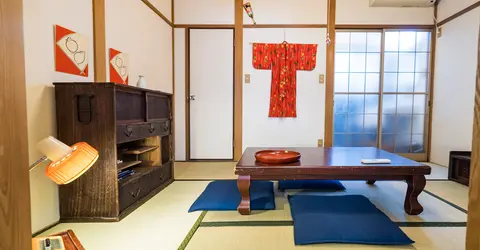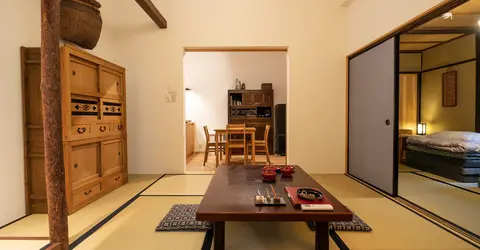Kyoto Municipal Museum of School History
The Kyoto Municipal Museum of School History is housed in a former school and introduces the history of Japanese education from the Edo Period to the present day.
Kyoto Municipal Museum of School History 京都市学校歴史博物館
The Kyoto Municipal Museum of School History is located south of Shijo in Gion not far from Bukkoji Temple and Shijo Kawaramachi Station.
The museum, which opened in 1998, is located in a former Meiji Period primary school with other parts of old school buildings from all over Japan also assembled here.
 Kyoto Municipal Museum of School History
Kyoto Municipal Museum of School History
Carriage Porch of Former Seitoku Primary School (1875), Kyoto Municipal Museum of School History, Gion, Kyoto
The Kyoto Municipal Museum of School History is dedicated to education in Japan in general from the terakoya schools of the Edo Period to the present day.
The museum also lays particular emphasis on the ground-breaking role played by Kyoto in laying the foundations of a modern education system in Japan after the Meiji Restoration of 1868.
The museum is laid out on three floors of the old school and includes both permanent and temporary exhibitions.
The first floor has exhibits on private Japanese schools in the last days of the shogunate such as terakoya (temple schools), kogido (cram schools for Chinese classics), meishinkan (Han or domain schools), senkyokan (lifelong education centers) and meirinsha or shingaku (moral philosophy schools).
Early education in the Meiji Period in Kyoto is introduced in particular the bangumi (school district) system, where 64 primary schools were established in Kyoto in 1869 by public donation three years before the advent of new national schools established by the Meiji government in 1872. The so-called kamadokin financed the new schools. Households possessing a kamado stove were obliged to make a donation towards schooling in the city.
As national education progressed in the Meiji Period, classrooms shifted from tatami mats to desks (known as tafel from the Dutch word) and chairs. Music was introduced to the Japanese school curriculum using imported western instruments along with art with an emphasis on Japanese painting and calligraphy using brush and ink.
Special needs schools were also introduced - the first in Japan being in Kyoto (Kyoto-moain) along with kindergarten for pre-school aged children, with the first in Tokyo - now the Attached Kindergarten of Ochanomizu University.
 Stone Statue of Kinjiro Ninomiya (Former Shotoku Junior High School)
Stone Statue of Kinjiro Ninomiya (Former Shotoku Junior High School)
Exhibits, Kyoto Municipal Museum of School History, Kyoto
A variety of textbooks are also on display. From 1880-1902 private publishers provided the textbooks in Japanese schools. From 1903-1945 textbooks were provided by the Ministry of Education as the state began to play an increasing role in shaping the minds of the young.
Exhibits of textbooks from pre- and post-war Japan show the heavy censorship (suminuri - black ink painting) that took place after Japan's defeat in World War II and the "re-training" manuals issued to teachers from 1946.
There is also a fascinating look at the development of the school lunch, which in reality has not changed that much since its inception.
 Kyoto Municipal Museum of School History, Kyoto
Kyoto Municipal Museum of School History, Kyoto
After World War II segregated state schooling for boys and girls was abolished and Junior High schools were established allowing for nine years of compulsory education.
The second floor and third floors introduce the Japanese classroom and there are photographs of Japanese schools and school activities including sports, drama and art.
 Kyoto Municipal Museum of School History, Gion, Kyoto
Kyoto Municipal Museum of School History, Gion, Kyoto
Kyoto Municipal Museum of School History (kyo-gakurehaku.jp)
437 Tachibana-cho, Gokomachi-dori, Bukkoji-sagaru, Shimogyo-ku
Kyoto 600-8044
Tel: 075 344-1305
Hours: Open from 9 am to 5 pm
Closed Wednesday, unless a national holiday, and over the New Year period.
Admission: Adults 200 yen
University, High School, Junior High School & Elementary School students 100 yen
From Kyoto Station take a #5 bus, a #26 bus or a #101 Raku Bus and get off at the Shijo Karasuma bus stop. Kyoto buses #8, #11, #12, #32, #46, #91, #201, #203 and #207 also stop at the Shijo Karasuma bus stop.
Kyoto Municipal Museum of School History is also an approximately 10 to 15-minute walk from Shijo Karasuma Station on the Kyoto subway and about 7 minutes from Hankyu Shijo Kawaramachi Station. From Kyoto Station buses #4, #5, #17, #104 and #205 go to Shijo Kawaramachi.
 Kyoto Municipal Museum of School History, Gion Kyoto
Kyoto Municipal Museum of School History, Gion Kyoto





























